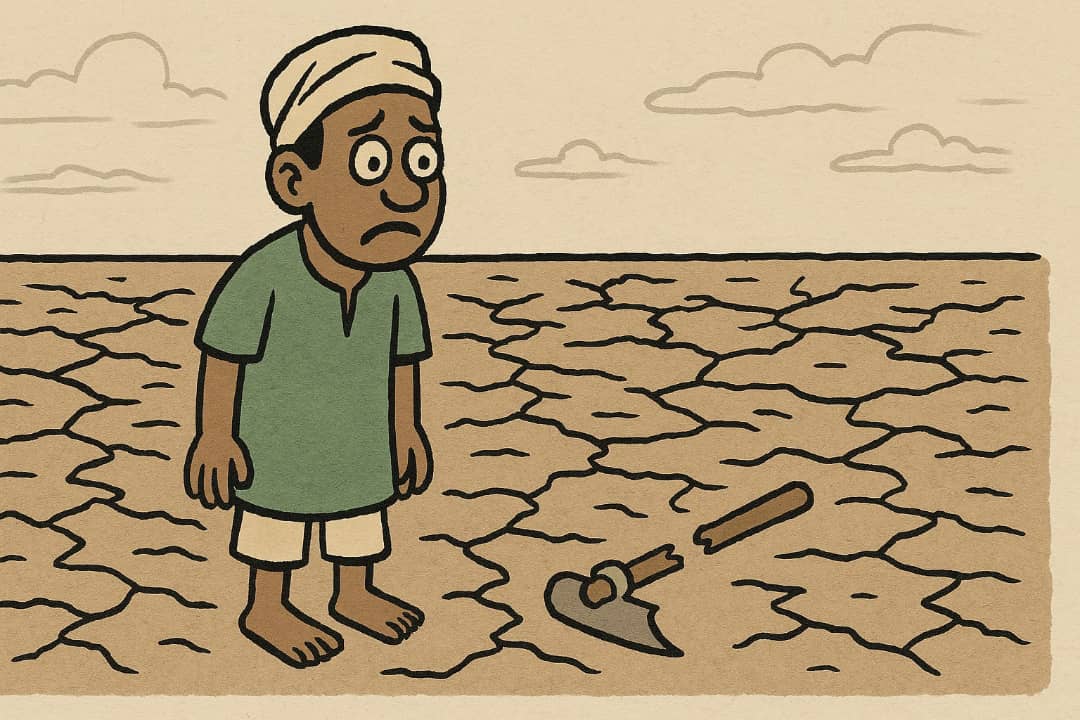Agriculture & Farming
Why Agricultural Output in Nigeria Is Falling

Agricultural output decline in Nigeria is happening in many places across the country. Many farmers are not harvesting enough food. People who used to plant and sell crops now say the soil is not giving good results like before. Some farmers now leave their farms because they are not seeing profits. In states like Benue, Plateau, Nasarawa, and parts of the North East, farmers who grow yam, rice, maize, millet, and groundnut are getting less than half of what they used to harvest.
One reason is the weather. Rainfall is no longer stable. In some areas, rain comes late or too early. This confuses farmers. If they plant too early and rain stops, the crops dry up. If they plant too late, the rain may damage the crops. There is no good weather forecast system for small farmers. Most of them depend on guesswork or traditional signs. That method does not work anymore because the climate has changed.
Another reason is insecurity. In many rural areas, people are afraid to go to the farm. Bandits, herdsmen, and kidnappers disturb farming communities. Some farmers have lost their harvest because they ran away from their land. In Zamfara, Niger, Kaduna, and Borno, many farmlands are empty. Where people are still farming, they have to pay local vigilantes for protection, which adds more cost to farming.
Cost of farming inputs is also high. A bag of fertilizer that used to sell for ₦8,000 now sells for more than ₦30,000. The price of herbicides and improved seeds has also gone up. Transporting farm produce from village to market is now expensive because of fuel prices and bad roads. Many farmers cannot make profit, so they reduce how much they plant. Others switch to crops that don’t need fertilizer, even if the market value is low.
Irrigation is not common in rural farms. Most farmers still depend on rain. In areas where dry season farming can help, many farmers do not have access to water pumps, boreholes, or canals. Even in riverine areas, the farmers cannot afford the tools to fetch and use the water for irrigation.
Storage is another problem. When farmers harvest crops, they don’t have enough storage space. Many still use sacks, raffia baskets, or open floor methods. The crops spoil fast, especially during the rainy season. Grain farmers lose their maize and sorghum to pests and moisture. This waste reduces the total output that reaches the market.
Middlemen take advantage of the situation. They go to farms and buy at very low prices, then sell at high prices in cities. Farmers have no choice because they need quick money. Some farmers do not know the right market price. They also cannot transport their goods to better markets because of the cost.
Government support is not reaching everyone. Some big farms get help, but many small farmers are left out. Sometimes, loans meant for farmers are given to people who are not farming. In some cases, farmers register for government support but don’t receive it. Others get fake inputs or poor-quality equipment.
Mechanization is not common. Many farmers still use hoes and cutlasses. In some places, there are no tractors or planters. If a tractor is available, it is too expensive to rent. This slows down farm work. Farmers can’t plant on time or cover large areas. Youths do not want to farm this way, so many rural farms are left for old people who are tired or too weak.
Extension services are weak. There are not enough trained officers to teach farmers new methods. In some areas, one extension officer is covering over five communities. This means many farmers are not getting any guidance. Some farmers use wrong spacing, wrong chemicals, or plant at the wrong time.
Land issues also cause low output. Some people do not have access to land. In cities and towns, land is being used for houses and roads. In rural areas, some people cannot farm because of family disputes. Others rent land, but the owners can take it back without notice. This discourages long-term farming investment.
Some people try to use farming apps, but network is a problem. In many places, mobile internet is poor. Even when farmers can access digital tools, they may not understand how to use them because the instructions are in difficult English. Many farmers cannot read or write well. They need tools in local languages or Nigerian Pidgin, but most apps don’t have that option.
To manage the low output, some farmers now form cooperatives. They contribute money and share tools. Some groups buy fertilizer in bulk and share it. Others hire tractors together and split the work. This helps, but it does not solve all the problems. The cooperatives still face challenges like leadership issues, poor record keeping, and lack of steady support.
Other farmers now use local organic manure because fertilizer is too expensive. They use animal waste, compost, and ash. This is good for the soil, but it takes time and effort. Also, it is not enough for large farms. Some farmers combine organic and chemical fertilizer, but the results vary depending on the soil and crop type.
Some private companies are helping farmers with training, storage, and market access. They teach farmers how to preserve food and improve yield. These companies work in states like Oyo, Kaduna, and Kano. But their reach is small. Most rural farmers do not benefit from these services.
Many young people are leaving the village because farming does not bring quick money. They go to cities and learn other trades. This means fewer people are working on the farm. Women and old people are the ones farming now in many communities.
Some people are trying urban farming. They plant vegetables in bags, buckets, or small plots. They use water from boreholes and avoid long transport. But this method is still small. It cannot replace large-scale farming that feeds the nation.
To stop agricultural output decline in Nigeria, people are calling for:
Better access to farm inputs
Strong rural security
Farmer education
Fixed rural roads
Storage centers
Regulated middlemen
Without these steps, the food shortage may continue.
Farmers who use traditional knowledge say the moon and wind no longer give the right sign. They feel the land is tired. Some believe they need to let the land rest or change what they plant. Others say they will stop farming if things don’t improve.
The cost of food is rising because farmers are producing less. Rice, beans, yam, and maize are more expensive now. People in the city feel the impact, but the problem starts in the village.
People who want to start farming now ask many questions. They want to know the risk, the cost, and the chance of profit. Some say they will wait and see. Others are trying fish farming or poultry instead of crop farming. These options need less land but still need good management and money to start.
There is no easy solution. People are trying many ideas. Some say technology can help, but it must be local, simple, and cheap. Others say the key is peace and security. Without safety, no one will go to the farm.
Agricultural output in Nigeria may not increase until the small farmer is supported well. They need tools, knowledge, and trust. Many of them still want to farm. They are only waiting for help.


 Digital Hustle5 months ago
Digital Hustle5 months agoHow to Make Real Money Online Using Simple Ways

 Money Moves5 months ago
Money Moves5 months agoHow to Avoid Bank Account Problems

 Stay Human5 months ago
Stay Human5 months agoHow to Know If You Are Losing Your Human Side

 Money Moves5 months ago
Money Moves5 months agoSimple Ways to Make Money the Honest Way

 Local Genius Spotlight5 months ago
Local Genius Spotlight5 months agoSimple Steps That Made Ian Williams a Leader

 Money Moves5 months ago
Money Moves5 months agoHow to Make Money Without Stress

 Local Genius Spotlight5 months ago
Local Genius Spotlight5 months agoWays Small Entrepreneurs Grow from Nothing

 Money Moves5 months ago
Money Moves5 months agoHow to Build Wealth and Keep Your Time
































